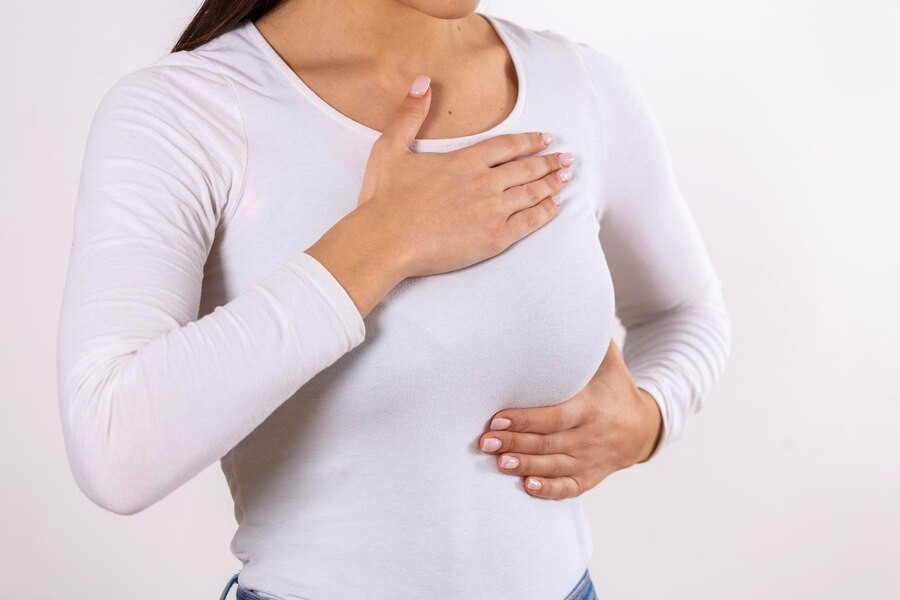In most cases, breasts that are in good health will have a symmetrical appearance; nevertheless, the size and shape of the breasts may not always be identical to one another. Smooth skin, the absence of visible discoloration, and the absence of lumps are additional characteristics of normal breasts.
Furthermore, healthy breasts do not experience any unusual pain, and the nipple does not allow any fluid to come out, with the exception of breast milk when the mother is breastfeeding. In order to maintain the health of your breasts, it is necessary to have routine checkups and to practice a number of behaviors that will help you prevent developing breast and other breast-related diseases.
The best tips for healthy breasts
To maintain the health of your breasts and reduce your risk of developing breast cancer, you should engage in the following behaviors:
Maintain an optimal body weight
Excessive weight and obesity elevate your risk of developing breast cancer. If you are overweight or obese, any disease—including breast cancer—may recur following therapy without appropriate weight control.
Exercise regularly
Regular physical activity may reduce the risk of developing breast cancer. Furthermore, consistent physical activity supports healthy weight management, enhances immune system function, and reduces estrogen and blood sugar levels.
Exercise for thirty minutes five days a week is beneficial to the body and has the potential to bring about significant changes in your body.
Consume healthy foods
Healthy foods are tasty, nutritious, and can help prevent several cancers, including breast cancer. Choose fruits and vegetables that are rich in phytochemicals and antioxidants. Eat more omega-3 fatty acids, such as nuts, seeds, salmon, and mackerel.
Avoid consuming excessive amounts of added sugars and saturated fats, as it can lead to unhealthy weight gain and raise the risk of developing cancer. Avoid consuming fast food and fried foods, as they offer empty calories that do not provide any nutritional benefits to the body.
Limit alcohol consumption
Alcohol consumption is associated with a 5% higher risk of breast cancer among light drinkers, a 32% higher risk for those who take 3-4 glasses of alcohol daily, and a 46% higher risk for those who consume more than four glasses per day. All kinds of alcohol, including red wine, light beer, and high-quality spirits, elevate the risk of developing breast cancer.
To reduce the risk of breast cancer, it is advisable to minimize and restrict consumption of alcohol as the most effective option.
Stop smoking
Smoking not only increases your risk of developing lung cancer but also elevates the risk of developing breast cancer. Cigarette smoke contains carcinogenic poisons and compounds.
Women who engage in active smoking or have a history of smoking are at a higher risk of developing breast cancer. Smoking additionally increases the risk of mortality from breast cancer and increases the chance of cancer relapse.
When is the best time for breast screening?
Routine breast screening is still necessary, even if you follow the aforementioned healthy lifestyle modifications, particularly if breast cancer runs in your family.
The following ages should be considered for routine screenings, per the American Cancer Society:
- Age 40–44 years if you have a family history of breast cancer or other risk factors
- Age 45–55 years as annual routine screening
- Age 55 years and over, routine screening every 2 years, and once a year for those who have a family history of breast cancer
Breast cancer can be detected early through routine examinations, which can lead to a more rapid onset of treatment and a higher probability of success.If you have any additional inquiries regarding breast cancer, you can either visit a doctor or make use of the consultation features that are available in the Ai Care application by downloading the Ai Care application from the App Store or Play S
Looking for more tips and tricks for health, first aid, and other home remedies? Click here!
- dr. Monica Salim
Cleveland Clinic (2024). 6 Ways To Boost Breast Health. Available from: https://health.clevelandclinic.org/ways-to-boost-breast-health
Sarag Ludwig Rausch (2023). 6 Signs That You Have Healthy Breasts. Available from: https://www.healthcentral.com/article/signs-of-healthy-breasts
WebMD (2022). Your Breasts: What’s Normal, What’s Not?. Available from: https://www.webmd.com/women/normal-vs-abnormal-breasts
Danny Bonvissuto (2023). Best Foods for Healthy Breasts. Available from: https://www.webmd.com/women/ss/best-foods-healthy-breasts
Mayo Clinic (2024). Breast cancer. Available from: https://www.mayoclinic.org/diseases-conditions/breast-cancer/symptoms-causes/syc-20352470
American Cancer Society (2020). Alcohol Use and Cancer. Available from: https://www.cancer.org/cancer/risk-prevention/diet-physical-activity/alcohol-use-and-cancer.html
Shishira Sreenivas (2023). How Smoking and Drinking Affect Breast Cancer. Available from: https://www.webmd.com/breast-cancer/smoking-drinking-breast-cancer
American Cancer Society (2023). American Cancer Society Recommendations for the Early Detection of Breast Cancer. Available from: https://www.cancer.org/cancer/types/breast-cancer/screening-tests-and-early-detection/american-cancer-society-recommendations-for-the-early-detection-of-breast-cancer.html











